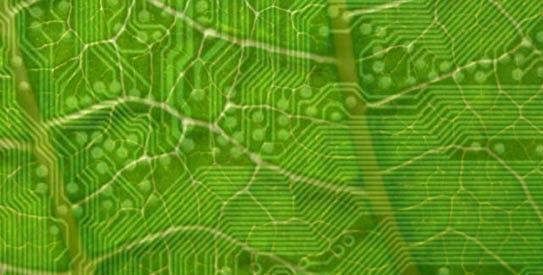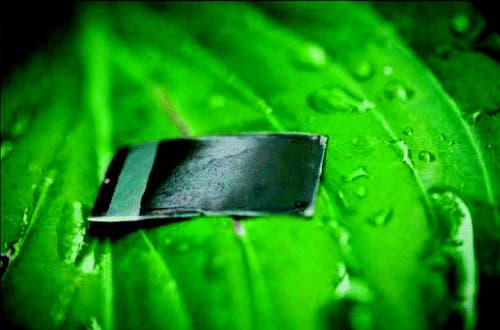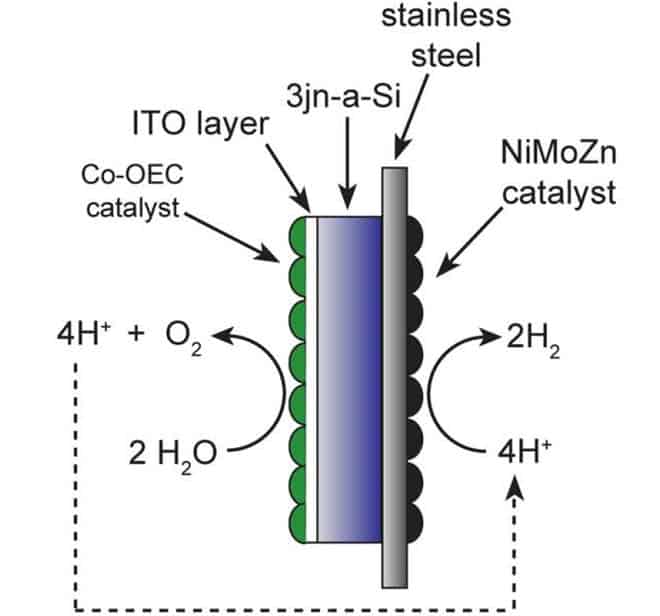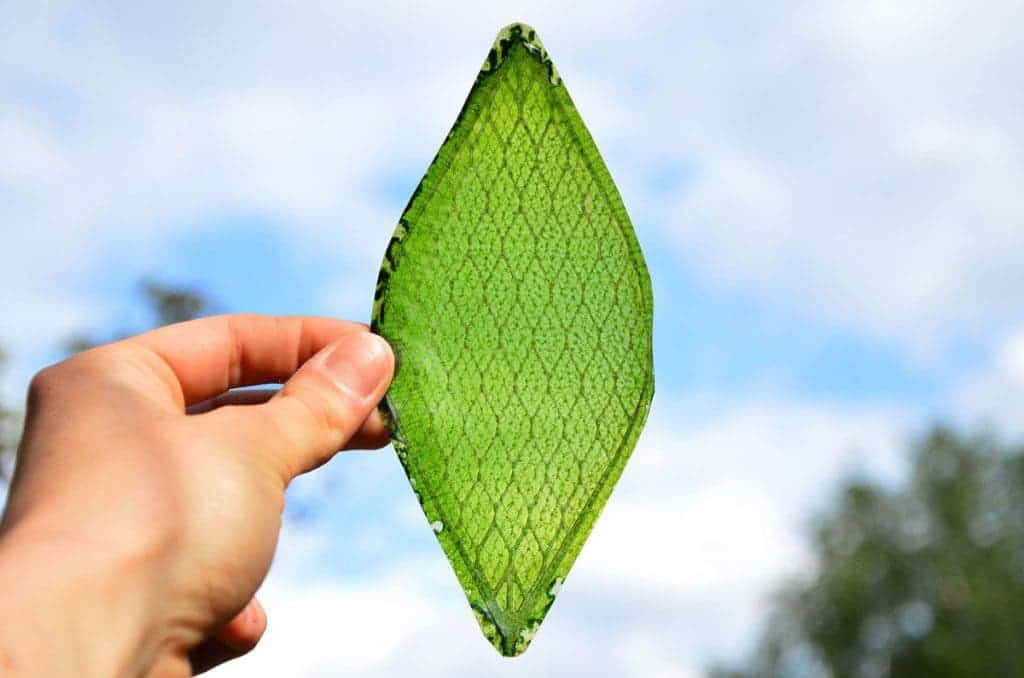
This past week, social media channels have been flooded with the story of the first functioning artificial leaf – a material that encases chloroplasts into silk proteins to generate oxygen from water and light. Websites like CNET and Gizmodo rushed to hail the invention as a viable means to generate oxygen inside spaceships or off-Earth colonies on Mars or the moon. If the leaf really works as the hype would have us believe, then it’s really a fantastic display of ingenuity. However, there’s no scientific paper, no data from tests that might tell us how efficient the leaf is at photosynthesis (if such tests even exist) and no solid scientific grounds that would suggest the leaf would actually work as intended. For the moment, it seems like this artificial leaf in question is more conceptual than it is practical.
Does it really work?
Its creator is Julian Melchiorri, a student at the Royal College of Art. He claims he has created the first man-made, biologically functional leaf that takes in carbon dioxide, water, and light and releases oxygen. Basically, the leaf consists of chloroplasts – organelles found in plant cells and eukaryotic algae that conduct photosynthesis – suspended in a body made of silk protein.
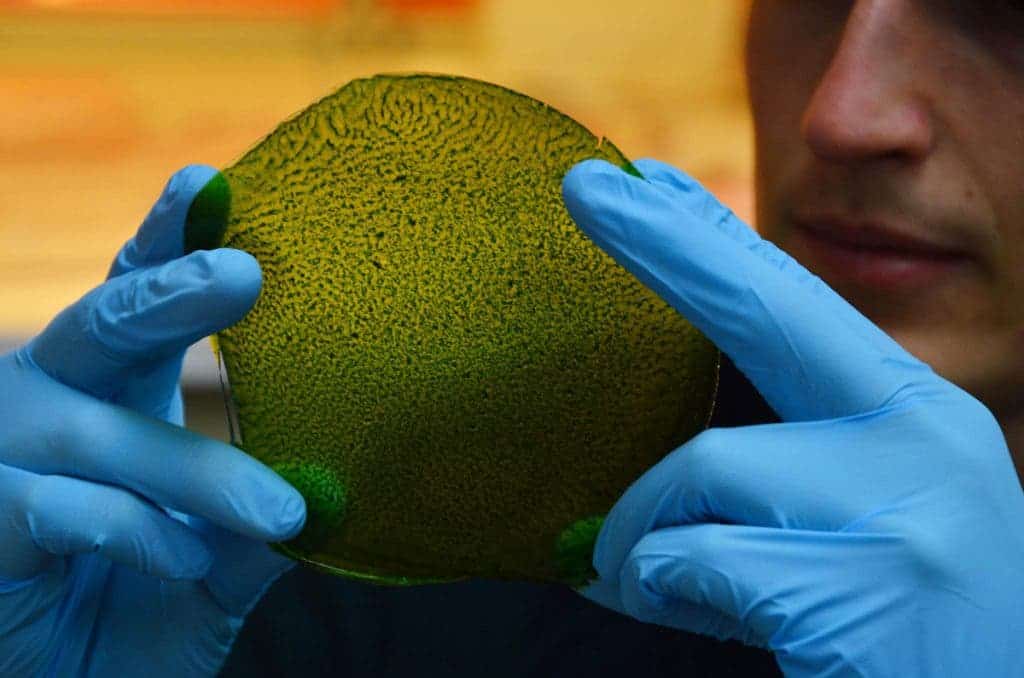
“This material has an amazing property of stabilizing (the chloroplast) organelles,” Melchiorri says in a presentation video. “As an outcome I have the first photosynthetic material that is living and breathing as a leaf does.”
The leaf could be used in space exploration as an oxygen generator. Its advantage over regular plants would be that it doesn’t require soil or special nutrients and isn’t confined to any problems that plant growth might face in zero gravity. Here on Earth, the leaf could be used for both indoor and outdoor environments, literally providing a breath of fresh air.
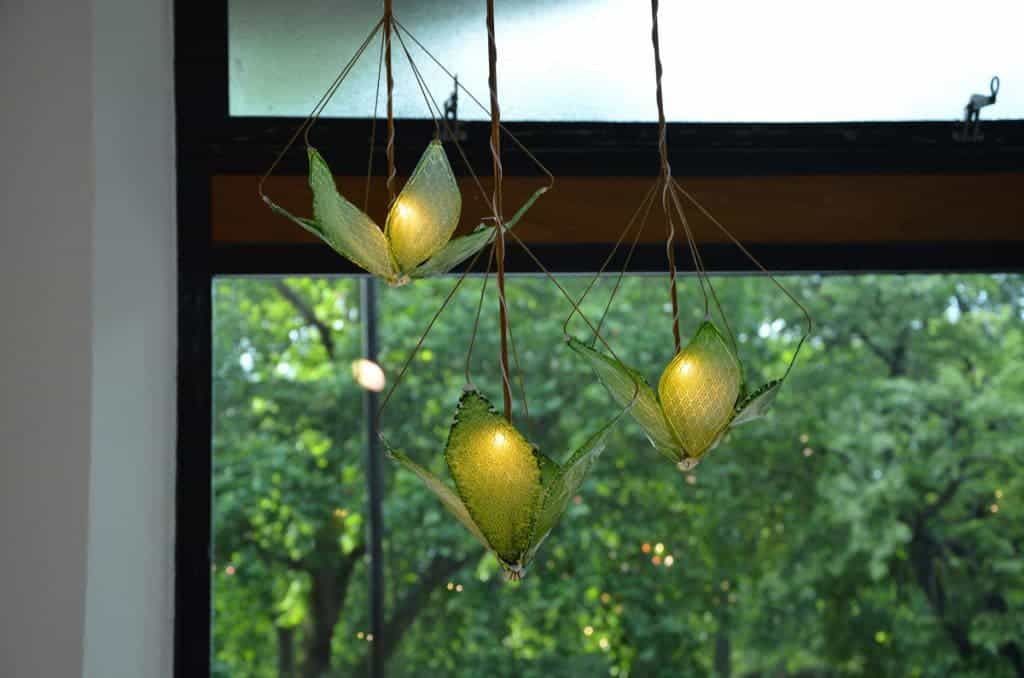
It all sounds very exciting, but is it all just for show? Wrapping chloroplasts into silk proteins is a great idea, yet while the design may provide photosynthesis, it’s highly unlikely this can be sustained. Chloroplasts are membrane wrapped-organelles. As such, they depend on various cellular pathways that cycle membrane and proteins to keep healthy. So, once you put them out of their environment, they’ll stop working soon. Dr. Wim Vermaas of Arizona State University’s Center for Bioenergy and Photosynthesis puts it better than I ever will:
‘[…] while it may possibly be true that silk proteins stabilize chloroplast function somehow, proteins in a cell are in a constant state of turnover (some more than others) and eventually (on the scale of hours or perhaps days), the system will inactivate. In isolated chloropolasts spread out on silk, no new nuclear-encoded proteins can be accessed. And as most of the proteins in the chloroplast need to be important, the life of an isolated chloroplast is necessarily short-lived. So, it won’t be surviving long enough to be useful for a space mission, I’m afraid,’ said Dr. Vermaas speaking for Materia.
For now, the best means of generating oxygen in space remains electrolysis, a process which uses electricity to split water into hydrogen and oxygen. The electricity is sourced from solar panels strapped on the spaceship or space station. Melchiorri’s leaf has the added advantage of working without any external energy input. If it works in the first place. Again, we’ve only been offered a superficial view of its inner workings. Personally, I hope it will eventually work, but I’m not betting on it.
